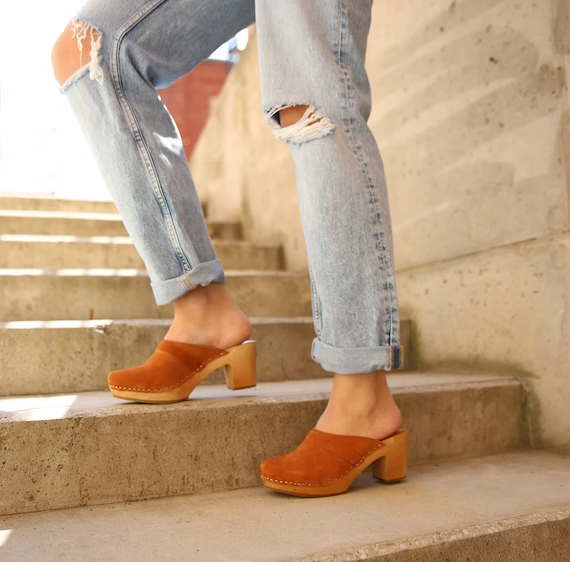
The Netherlands is known for its rich history and culture, including its traditional fashion. One of the most iconic items in traditional Dutch fashion is the clog, a wooden shoe that has been worn by Dutch people for centuries. While clogs were originally worn by both men and women, they have become primarily associated with women’s fashion in recent years. This article will explore the role of women’s clogs in traditional Dutch fashion and how they have evolved over time.
The History of Clogs in the Netherlands
Clogs have been a staple in Dutch fashion for centuries, dating back to when the Netherlands was primarily an agricultural society. The clog’s design was simple yet practical, making it an ideal shoe for farmers and other workers who needed sturdy and durable footwear. Clogs were traditionally made from wood, which was abundantly available in the Netherlands. The wooden shoes were typically carved from a single piece of wood, with a hollowed-out cavity for the foot and a raised platform on the bottom to protect against mud and water. The clog’s design allowed it to be worn in a variety of settings, from muddy fields to city streets.
As time went on, clogs became more than just practical footwear for farmers and workers. They became a symbol of Dutch identity and a popular fashion item. Wealthier individuals began to wear clogs made from more expensive materials, such as leather, and decorated with intricate designs. In the 19th century, clogs became a popular item for tourists visiting the Netherlands, and souvenir clogs were sold alongside other Dutch souvenirs.
The Role of Women’s Clogs in Traditional Dutch Fashion
Women’s clogs typically have a higher heel than men’s clogs, giving them a more feminine appearance. Women’s clogs are also often decorated with colorful designs and patterns, making them a popular fashion item.
In traditional Dutch fashion, clogs were worn by women of all ages and social classes. They were particularly popular among working-class women, who wore them as practical footwear for their daily tasks. However, clogs were also worn by wealthier women as a fashion statement. Wealthy women would often wear clogs made from expensive materials, such as leather, and decorated with intricate designs.
Clogs were traditionally worn with a variety of outfits, from simple peasant dresses to more elaborate costumes. They were often worn with stockings or tights to provide extra warmth and comfort. In some regions of the Netherlands, women would wear clogs with a special type of costume known as a “klederdracht.” This costume consisted of a blouse, skirt, and apron, along with a variety of accessories and headwear.
The Evolution of Women’s Clogs in Dutch Fashion
While clogs have been a staple in Dutch fashion for centuries, they have evolved over time to keep up with changing fashion trends. In the 20th century, clogs became less popular as more modern footwear options became available. However, in recent years, clogs have experienced a resurgence in popularity, particularly among fashion-conscious women.
Today, women’s clogs come in a variety of styles and designs, from traditional wooden clogs to more modern versions made from materials like leather or rubber. Some clogs are decorated with intricate designs and patterns, while others are more simple and understated. They are popular among fashion-conscious women who want to add a touch of Dutch tradition to their wardrobe.
Conclusion
Women’s clogs have played an important role in traditional Dutch fashion for centuries. Originally worn as practical footwear by farmers and workers, clogs eventually became a symbol of Dutch identity and a popular fashion item. Whatever the style, women’s clogs continue to be an iconic item in Dutch fashion.

